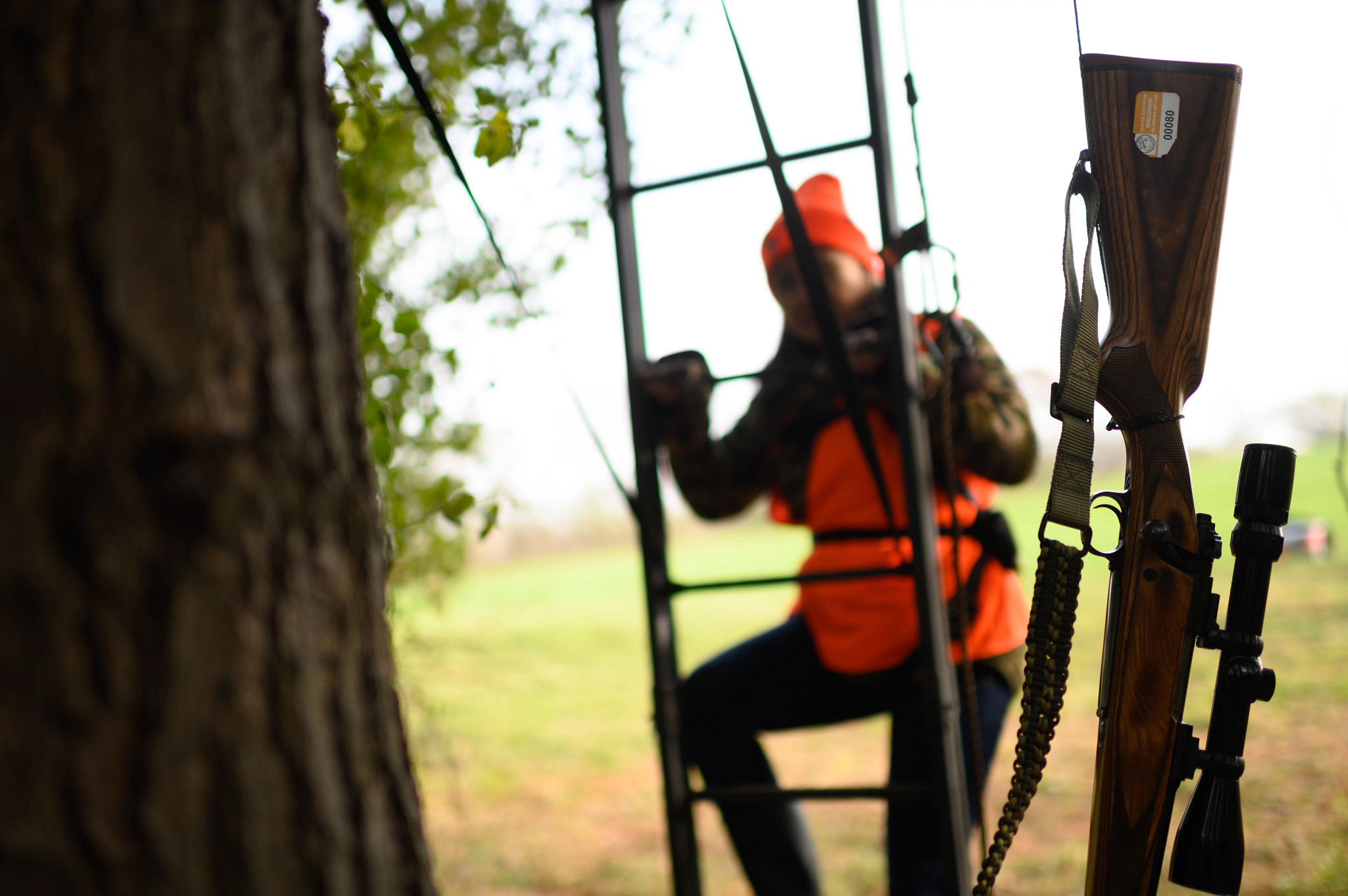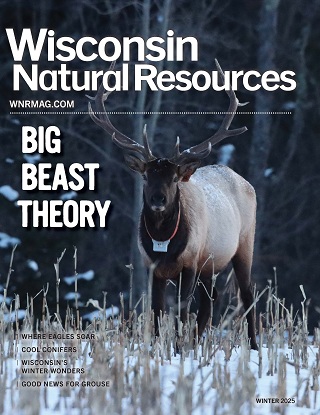Contact: Mike Hillstrom, DNR Forest Health Specialist Michael.Hillstrom@wisconsin.gov or 608-513-7690
Avoid Ash Trees When Placing Deer Stands
 It is important to place and maintain tree stands carefully as you prepare for this upcoming hunting season.
Photo credit: Wisconsin DNR
It is important to place and maintain tree stands carefully as you prepare for this upcoming hunting season.
Photo credit: Wisconsin DNR
MADISON, Wis. – The Wisconsin Department of Natural Resources (DNR) cautions hunters to avoid placing deer stands in or near ash trees this deer hunting season as they start scouting properties.
Most ash trees in the southern half of Wisconsin, Door County and the Mississippi River counties are dead or dying from emerald ash borer infestation. Although emerald ash borer is not as widespread in other parts of the state, the invasive insect continues to be found at additional locations throughout the state and unreported infestations are also likely present.
It is important to place and maintain tree stands carefully, as trees infested with emerald ash borer may unexpectedly snap or drop large branches. Hunters should also be cautious around ash trees when on the ground, especially in windy conditions, as infested trees are susceptible to branch and stem breakage.
“Dead and dying ash trees are structurally weaker than healthy trees, so they are not safe places to put deer stands,” said Bill McNee, DNR Forest Health Specialist. “In many cases, it can be hard to tell if a tree has been infested by emerald ash borer, so hunters should place deer stands in other types of trees instead.”
Tree stand accidents are the leading cause of serious injury to deer hunters. Research shows one in four bowhunters have experienced a fall or near-fall from an elevated stand.
Basic Rules Of Tree Stand Safety
No matter the type of tree stand, follow these basic safety rules:
- Always wear a full-body harness, also known as a fall-arrest system. Connect to your tether line and keep your tether line short. The tether is designed to keep you in the seat, not to catch you after you fall.
- Always have three points of contact while climbing into and out of the tree stand, including two hands and one foot or two feet and one hand at all times.
- Always use a haul line to raise and lower your unloaded firearm or bow into and out of the stand. You can also use the haul for other things like a heavy backpack.
- Use a lifeline when climbing up and down, this keeps you connected from the time you leave the ground to the time you get back down.
Additional tree stand safety information is available on the DNR’s tree stand safety webpage. Hunters can also participate in the Tree Stand Manufacturers Safety Course. The free, interactive course takes just 15 minutes to complete yet contains valuable, potentially life-saving information.
How To Identify Ash Trees
Ash trees can be identified through two key features: opposite branching patterns where two branches come off the main stem directly across from each other and compound leaves with 5-11 leaflets.
More information on ash trees and how to identify them is available on the UW-Madison’s Department of Entomology Emerald Ash Borer in Wisconsin webpage.
Avoid Spreading Forest Pests And Diseases
When traveling for hunting season, obtain firewood close to where it will be burned. This will reduce the chance of spreading tree-killing insects and diseases such as emerald ash borer, spongy moth and oak wilt.
Dry firewood with loose bark has the lowest risk of spreading harmful insects or diseases. Purchasing certified firewood is another option, as it is widely available and is seasoned or treated to eliminate pests and diseases. Bundles of certified firewood have a printed label showing certification.
More information about emerald ash borer, signs and symptoms of infestation and where this pest has been found is available on the DNR website.

